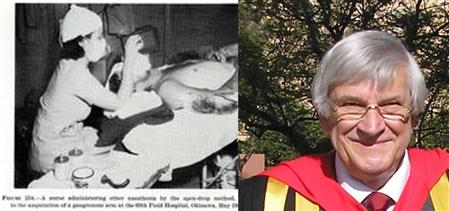The legacy of anaesthesia events at Pearl Harbor

- Registration for this event is now closed.
|
20 Jul 2021 |
||
 Unley Unley
|
||
|
Speaker: Dr John Crowhurst
In 1941 in the USA, the British Empire and most of the developed world, less than 10% of all general anaesthetics administered were with intravenous (IV) barbiturates. In the USA, diethyl ether was used in more than 95%, and administered almost exclusively by nurses, as there were very few physician anaesthetists, in contrast with Britain and most other countries.
During the Japanese attack on the US Military bases at Pearl Harbor ether stocks were depleted quickly and some of the 1,000 or so shocked and trauma casualties, who required emergency surgery & anaesthesia, received intravenous Sodium Pentothal® anaesthesia.During the 75 years since that attack, most anaesthetists all over the world have been told by senior colleagues that Pentothal® killed more personnel than did the Japanese on that infamous 1941 Sunday morning. The late Dr Frank Bennetts, an English Consultant Anaesthetist, reviewed this topic in his presentation to the History of Anaesthesia Society in 1990 and in his famous 1995 publication in the BJA*, but failed to confirm the allegation of 'hundreds' of Pentothal® tragedies. Nevertheless serious 'events' did occur, because the acceptance of Pentothal® anaesthesia declined markedly in the USA for > 10 years following its ill-fated use at Pearl Harbor.
This presentation reviews those 'events', and outlines their historical significance, which resulted in the need to train more doctors in Anaesthesiology; the discovery of many new superior drugs and techniques of anaesthesia, and increased research and teaching. Surgeons, in particular, and the medical profession generally, soon realised that Anaesthesiology needed to be a specialist medical discipline in its own right. The establishment of Faculties of Anaesthetists; the NHS, in Britain, and appropriate training in pharmacology, physiology, and other relevant sciences soon ensured specialist recognition of physician anaesthetists. Thus, the events at Pearl Harbor were a catalyst which resulted in the eventual demise of more than a century of ether anaesthesia and yielded a legacy which gave rise our remarkable specialities of modern Anaesthesiology, Intensive Care and Pain Medicine.

